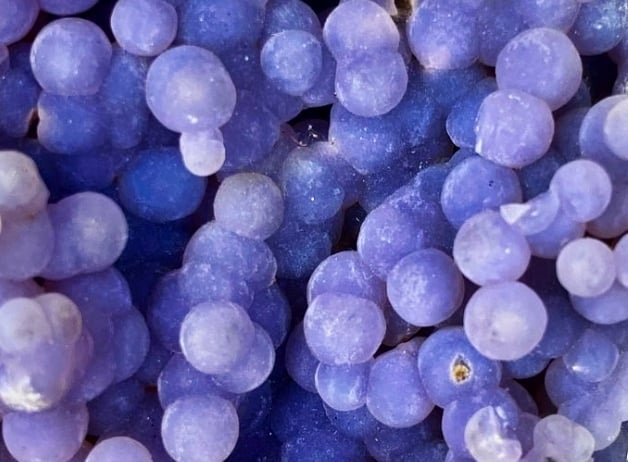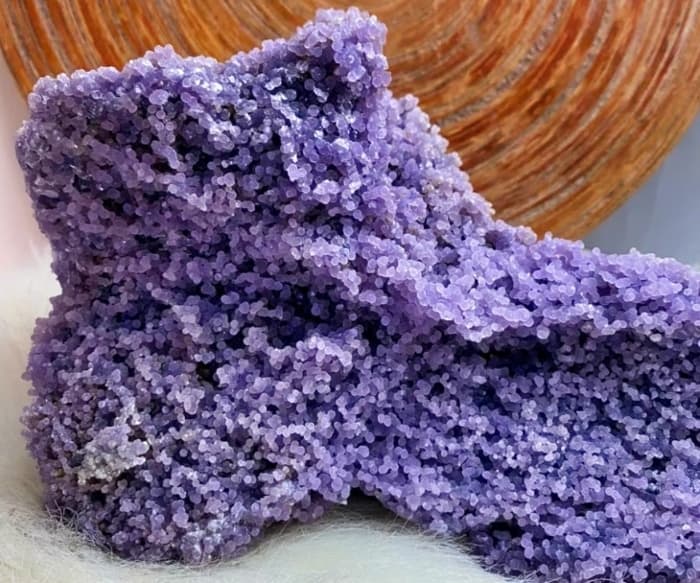Grape agate is a relatively new chalcedony discovered in the mid-2000s but it took a couple of years for collectors to be able to purchase them on a commercial basis. Sure, you could find a random rock and mineral dealer at Tucson Gem and Mineral show who had 4-5 pieces but he or she wanted way too much for them.
It has become fairly popular due to its shape and color. The most common color is medium to dark purple but you can find specimens in all shades of purple at this time. The green to blue-green variety seems more rare and harder to come by but collectors tend to go for the purple color the most.
If you’re wondering how it got its name then it’s due to the mass of small, bubble-shaped nodules which have a grape-like appearance. As you can see below, some of the spheres are perfect while others have grown into each other.

What Is Grape Agate?
Grape agate is chalcedony that forms in small spherical nodules known as botryoidal. This chalcedony formation is very rare and can be found in purple, green, white, or grey colorations.
Grape agate is not actually agate! Technically, this crystal falls under the category of chalcedony because of the way it forms.
While both are a form of quartz, agate has parallel lines of banding while chalcedony has no banding.
Most of the small botryoidal crystals are 2-8 millimeters or around .1-.3 inches in circumference.
Where is Grape Agate Found?
The largest deposit of grape agate is found in Mamuju, Indonesia. It’s located on the island of Sulawesi which is off the coast of the mainland.
Where to Find Grape Agate in the United States?
Utah is the only known deposit of grape agate in the U.S. The quality does not compare to the deposits in Indonesia but if you’re a serious rock hound then Utah is your spot for adding grape agate to the collection.
According to the Utah Geological website, this area is within public access. This means you can simply visit and start looking for grape agates.
It’s close to Highway I-70 and 24, making it fairly easy to locate. We recommend bringing a screen so you can sift through the river sediment.

How is Grape Agate Formed?
Grape agate is formed over a long period of time, chalcedony is slowly created as quartz and moganite are slowly deposited into a pocket of volcanic rock.
Chalcedony crystals don’t normally form into rounded shapes and the purple hue makes grape agate even more rare because iron is not typically found near these deposits. The round spheres are known as botryoidal which means round tiny sphere-shaped crystals.
Can Grape Agate Get Wet?
Yes, grape agate can get wet and you can submerge it in water because it’s an amethystine chalcedony variety and has a Moh’s hardness of 6.5.
Side note: If you search Google you’ll see quite a few sites claiming you can’t put grape agate underwater, this is untrue.
How to Add Grape Agate to Your Rock and Mineral Collection
Grape agate was is a recent discovery but you’re in luck because specimens have become commercially available. Your best location to purchase grape agate would be Instagram but you’ll need to do your due diligence to find trusted online sellers.
- Identify Enstatite - March 12, 2024
- Identify Cerussite - March 3, 2024
- Identify Bytownite - February 18, 2024
